












the magazine of the Memphis Bar Association
Memphis Bar Association Publications Committee
Nicole M. Grida, Chair
Audrey Calkins, Vice Chair
Terre Fratesi
Maureen Holland
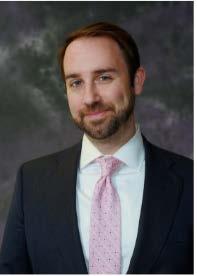
Adam Johnson President Nahon, Saharovich & Trotz
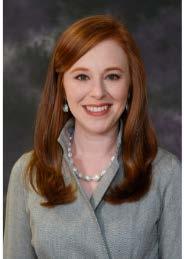
Lauren Stimac Vice President Glassman, Wyatt, Tuttle & Cox


Jennifer Sink Past President MLGW
The Memphis Lawyer is a quarterly publication of the Memphis Bar Association, Inc. with a circulation of 2,000. If you are interested in submitting an article for publication or advertising in an upcoming issue, contact info@memphisbar.org. The MBA reserves the right to reject any advertisement or article submitted for publication.
Marlinee Iverson Secretary/Treasurer Shelby County Attorney's Office
Donald Babineaux
Taurus Bailey
Preston Battle
Audrey Calkins
Amber Floyd
Malcolm Futhey III
Jack Heflin
Justin Joy
Lani Lester
Matt May
Joseph McKinney
Hon. Danielle Mitchell
Ruchee Patel
Will Perry
Abigail Webb Sala Hon. Zayid Saleem
Joseph Smith
Maggie Stringer
Quinton Thompson Councilwoman Janika White
Section Representative
Laurie Christensen
Anne Davis
Thomas Greer
Chasity Grice
Dan Norwood
Toni Parker

Taylor Flake Lawson The Memphis Bar Association 145 Court Ave. Suite 301 Memphis, TN 38103
Phone: (901) 527-3573 www.memphisbar.org



AWA Representative Eliza Jones
Law School Representative Regina Hillman
NBA Representative Carlissa Shaw
YLD President Jeffrey Moore


BY ADAM JOHNSON, MBA 2024 PRESIDENT
Oh, hello again. As a fanatic of the season, I’m so happy fall is here at last! I love 90% humidity in 100 degree heat as much as the next person, but fall is my favorite season and it is not even close. Cool temperatures, fantasy football, pumpkin spice, hot beverages, horror films, all the decorations . . . what’s not to love? And as part of the fall season this year, the MBA held its 150th anniversary Gala at the Museum of Science and History on October 19. Oh boy, what a night it was too! Highlights included the Soul Shockers, a caricature artist, violinist Journey Hogan, cocktails by Bar Essentials, food by Paradox Catering, and zero agenda. I hope everyone who attended had a wonderful time! Also,
a big thank you to the committee that spent the past year planning the evening: Judge Annie Christoff, Lauran Stimac, Terrence Reed, Maggie Roney, Patrick Hillard, and Quinton Thompson.
Now that the holidays are fast approaching, please note that our annual meeting will be a luncheon this year. It will be on December 12, 2024 at 11:30 a.m. at Bridges USA. As usual, the Sam A. Myar, Jr. Award and the Lawyer’s Lawyer Award will be presented to this year’s honorees. You will also get to hear me wax eloquently about everything the MBA accomplished in 2024 before handing over the gavel to incoming President Lauran Stimac. You really don’t want to miss it!




In a continuation of our “Choose 901” focus, Publications Committee Chair Nicole M. Grida recently interviewed Shelby County Circuit Judge Valerie Smith about her Tipton County roots, her career path, and the different ways she has served Shelby County over the years both on and off the bench.
Judge Valerie Smith has deep roots in West Tennessee. Her mother’s family has been in Weakley County for five generations, and she is the sixth generation of her father’s family to have been born and raised in Tipton County. Growing up, her family farmed, and she has vivid childhood memories of combining those chores with others to support her parents’ businesses. For example, she would wrap floral wire or unwrap and price items while she watched television. Her ability to multitask from a young age created a strong work ethic that would serve Judge Smith well throughout her career.


Judge Smith chose The University of Memphis for college because she saw a good opportunity to stay close to friends and family. She then attended law school at Cecil C. Humphreys School of Law, which felt comfortable because she already knew some classmates since she grew up near Covington, Tennessee and attended UofM for undergrad. During her first year at Memphis Law, she lived at home with her parents and commuted from Tipton County. Before starting her second year in 1998, Judge Smith laid down permanent roots in Memphis and has lived here ever since.
Drawn to a legal career while studying at Memphis Law, she recalled being fascinated by how the law breaks down into discrete elements, like puzzle pieces, and how she enjoyed figuring out how those pieces fit together to make a full, complete picture. Only with a complete picture of the legal issues involved can Judge Smith determine if a party’s claim is sustainable. She acknowledged attorneys often have blinders regarding the flaws in their cases. She explained that “When you're arguing, you can convince yourself of just about anything. But of course, hearing parties’ arguments is completely different.”
Judge Smith’s path to the bench also came together like a puzzle. First, she clerked for Judge James Russell in Shelby County Circuit Court, Division II during her third year of law school. During her time clerking, Judge Smith enjoyed connecting the pieces as to how civil procedure and trials work in practice.

Next, she spent approximately six years as a prosecutor with the Shelby County District Attorney’s Office, where she learned how to try cases and handle a large docket. Judge Smith also did some civil work while at the DA’s office including forfeiture and nuisance cases.
Before being appointed to the bench on March 8, 2016, she spent ten years at Nahon Saharovich & Trotz, where she maintained a large case volume and tried even more cases. During her time with NST, Judge Smith had the chance to handle cases all over Western Tennessee.
In August 2016, Judge Smith won a retention election and successfully secured a full 8-year term in August 2022 after running unopposed. Throughout her time on the bench, she has remained active with the Memphis Bar Association, Leo Bearman, Sr. American Inn of Court, and Association for Women Attorneys.
In talking with Judge Smith, she noted how she quickly learned that being a judge can be lonely at times. After the election, she recalled some people treated her differently—which she understands under the circumstances!
Judge Smith spoke fondly, and with a big smile, about her time on the bench. Notably, she has enjoyed learning about new areas of the law. She even chuckled after stating that she never gets bored.
As she dissects cases into the elements the parties need to address, Judge Smith relishes bringing cases to resolution, whether through bench or jury trials or motion hearings. She acknowledged making decisions on heavy topics can take a toll, but if you have ever been in her courtroom, you know she expects attorneys to be prepared. In return, attorneys who practice in front of her know she will make sure her decision is well-reasoned
and rooted in the law.
During her time on the bench, Judge Smith has enjoyed presiding over happy occasions such as weddings. She used to officiate more weddings than she does now, and even talked about how Division III performed a record high of TWENTY-ONE weddings in a single day February 22, 2022! Since taking the bench in March 2016, Judge Smith has officiated over 1,000 weddings.
From June 2023 until June 2024, Judge Smith served as the President of Tennessee Judicial Conference, which is comprised of all state court judges including circuit court judges, chancery court judges, appellate judges, and Tennessee Supreme Court justices. Probate judges are also included because even though they are county judges, they have state-level jurisdiction. As President, she was responsible for running meetings, appointing the other officers, and overseeing the Conference’s three meetings. Judge Smith explained that during the meetings of the Tennessee Judicial Conference, judges gather together to discuss a range of topics including necessary updates to the Tennessee Pattern Jury Instructions, to consider data as it relates to weighted caseload, and to engage in strategic planning. The judges also attend CLE sessions on topics such as judicial wellness, how to handle voir dire, and how to make bench and jury trials more manageable. Judge Smith also shared that the Tennessee Judicial Conference has its own legislative committee, which allows judges to convey their positions regarding proposed legislation with state legislators
Although the Tennessee Judicial Conference and her bar association involvement has kept Judge Smith busy, she has made time to be involved in the local community as well. Along with her husband, David Wittman, a

United States Air Force veteran, she donates to food drives and other charities including those that address veterans’ needs.
Along with Dave, Judge Smith is a founding member of Section 901 Youth Athletic Fund, a 501(c)(3) nonprofit that benefits youth sports throughout Memphis. This nonprofit originated out of an idea that a group of friends envisioned while supporting the Memphis Tigers from Section 109 of the Liberty Bowl. The Section 901 Youth Athletic Fund fills the gap in athletic funding for area sports teams and covers the last few inches a team needs to get to a fundraising goal. For example, this nonprofit helps buy equipment and snacks for kids so that coaches do not have to do so. The Section 901 Youth Athletic Fund has also purchased a washing machine to wash towels and uniforms between games. Through this nonprofit and other community work, Judge Smith
remains rooted in the Memphis community which she chose years ago. In her own words, “When people stand together for a common goal and want to make things better, you see success from those efforts.”
Judge Smith encourages us to get out into the community, pay attention, and meet the needs we see. She stressed that if we do not engage with our surroundings, we cannot learn about what members of our community need and how we can help them. Judge Smith urges us to intentionally visit all the parts of Memphis to promote unification of all the areas of the Bluff City. With our eyes open, and an intentional purpose of service, she believes we can each make our own decisions, from our own observations, about how best to serve our beloved city.






BY JOHN M. RUSSELL
Ioften hear people say, “the days are long, but the years are short,” usually in reference to how quickly their children have grown up. As a parent of grown children, I understand well the truth contained in this phrase. The poet Andrew Marvell memorably penned the same sentiment: “But at my back I always hear / Time’s wingéd chariot hurrying near.”
The rapid passage of time spurs us to reflect on the past, including our successes and failures. As I enter my 30th year of practicing law, I have been reflecting on lessons I have learned through these years. With a great dose of humility, I want to offer a few observations about successful client development to new lawyers who are at the dawn of their legal careers.
Law school obviously is an indispensable training ground for teaching substantive legal concepts, the language of law, and of course passing the bar exam. But law school does not teach students how to practice law. I remember vividly my first day on the job as an associate. A senior associate assigned me a simple motion to draft and reminded me to “sign the certificate of service.” I had no idea what a “certificate of service” was. I was too embarrassed to ask her, so I figured it out on my own, while thinking, “they never taught me this in law school.”
Client development is an important skill we do not learn in law school. Those young lawyers starting a legal career in a private practice will quickly feel how daunting it is to build a “book of business.” The competition for business is fierce, so you must distinguish yourself to attract new clients. Client development is a vital skill, both for obtaining new business and for maintaining relationships with your existing clients.
I remember my first mentor, Tom Henderson, providing me invaluable advice on generating new business. He said: “The best way to get new clients is to do good work for the clients you do have.” His comment lodged in my brain, remained there, and has been a guidepost for our firm’s business development through the years.
A few years ago, a large national corporation retained our firm to defend their EEOC charges throughout
the United States. The in-house labor and employment counsel asked us to represent the company because she had worked with us at her prior in-house counsel job at another corporation we represent. She knew the quality of our work product. We received the work because we provided good work for a client we did have. My first thought upon receiving the call for this work was, “My mentor was right.”
Being an expert in your area of law, preparing and delivering the highest quality work product, speaking at seminars, and writing articles for legal publications are all, of course, important to building your reputation and achieving success with client development. But I want to offer a few other simple—but perhaps easily overlooked—ideas to help you provide good work for the clients you do have.
Make yourself easily accessible to your clients. Many of us have experienced the frustrating experience of trying to reach a lawyer or some other professional but having to go through multiple “layers of protection” to reach them. You may call a law firm and reach a receptionist, who transfers you to a legal assistant, who then tells you the attorney is not available. You then may wait a day or two to receive a return call from the attorney. Provide your clients with your cell phone number and do your best to answer when they call, even if at an inconvenient time, without allowing the call to roll to voice mail. You will send an unmistakable message to your client that they and their legal matters are important (which they are!).
I have had many clients through the years comment when I answer the phone, “I did not expect to reach you. I thought I would get voice mail.” If you cannot answer, at least promptly follow up with an email to the client letting them know you received their voice mail and will return their call. Be accessible and responsive.
Scrupulously avoid grammatical errors even in informal communications. Robert Breault said, “Do not be surprised when those who ignore the rules of grammar also ignore the law. After all, the law is just so much grammar.” None of us is perfect with our written communication, but our focus on avoiding grammatical

mistakes in client communications is crucial. When we email or text with clients, we are tempted to think these methods of communication are less important because they have an informality about them. Resist this temptation. If I were in-house counsel hiring outside counsel for an important legal matter, I would not retain an attorney who sent emails to me with poor grammar or misspelled words. I would instinctively assume the attorney might commit the same errors in motions or briefs. This assumption may be unfair, but you can avoid creating this perception by treating all written communications with the utmost care.
Provide your smaller clients with the same level of courtesy and attention as your large clients. We may unintentionally be less responsive to smaller clients whose matters do not generate high revenue streams. Avoid this mistake. First, it is the right thing to do. All clients, regardless of their size, deserve our best effort as their legal advocates. Second, you may reap the secondary benefit of small clients becoming large clients or referring you other clients. Over time, small companies grow into larger companies, and you can grow with them as their counsel. And smaller clients often are in positions to recommend you to new clients. Your “small” clients will remember the respect and attentiveness you provide to them.
Ask yourself, “How could I make this work product a little bit better?” In our eagerness to finish a project and with the time demands of a busy practice, we can be tempted to provide a client with a work product that is “good enough.” Resist this temptation. Try to add more value to your client’s work product by one additional layer of review for anything that makes your work product a bit better: correcting misspelled words, adding a missing case citation, including an additional legal argument you may have missed. What you add at this final review may be what your client would have noticed as a glaring omission.
Carefully review your clients’ invoices before sending. With the demands of a busy legal practice, it is easy to make mistakes on our clients’ invoices. An obvious
and embarrassing mistake is erring on the amount of time you spent on a project. You do not want to receive a call from your client asking about a time entry of 2.0 hours that should have been 0.2. We also want to avoid misspellings on descriptions of legal services provided. Errors on our invoices can create the impression that we may lack care in our other legal writing.
Use your client’s name in your billing descriptions. Dale Carnegie famously wrote that “A person’s name is to that person, the sweetest, most important sound in any language.” I learned years ago at a CLE to use your client’s name in the description of services on your invoices. In other words, use “Telephone conference with J. Smith regarding upcoming mediation” rather than “Telephone conference with client regarding upcoming mediation.”
Humility is vital to successful client development. It is axiomatic that people want to work with people they like. We all know a lawyer who is brash, overly confident, and arrogant. Do not model yourself as a lawyer after this stereotype. A church pastor once wrote, “Humility looks good on everyone and is suitable for every occasion. Wear it every day, to every meeting, and to every conversation.” Of course, clients rely upon and value lawyers who are experts in their field but who also are genuinely humble and willing to admit when they are wrong. Cultivate the virtue of humility. Your clients (and judges) will appreciate this quality in you.
To the newly-minted lawyers, you are at the dawn of an exciting and rewarding career and are part of a noble profession. I hope these observations will help you find success on your client development journey. In essence, they are nothing more that pursuing excellence in all aspects of our endeavors.

John Russell is a partner with Russell & Wong, PLLC and devotes his practice to all aspects of Labor & Employment Law on the defense/management side. He can be reached at 901.849.4433 or john@rwlawpllc.com.

BY LAURAN G. STIMAC AND HAYDEN B. DAVIS RESEARCH ASSISTANCE BY IZORA H. WOOD AND WILLIAM C. LOCKETT, III
Civillitigation practitioners in Tennessee are more and more frequently encountering a relatively new statute that has significantly changed the landscape of tort claims such as defamation, slander, interference with business relationships, breach of contract, breach of fiduciary duty, and even legal malpractice. Known by its acronym TPPA, the Tennessee Public Participation Act, codified at Tenn. Code Ann. § 20-17-101, et seq., provides defendants with a means by which they can “SLAPP back” at plaintiffs who allege they are entitled to damages based on statements the defendants have made in various contexts, thereby protecting the citizens of Tennessee’s right to free speech. The statute bears strong language requiring dismissal with prejudice and a mandatory award of attorney’s fees, and our appellate courts now regularly provide us with guidance on the substantive application of the TPPA and its procedural framework. This article provides the legislative history of the TPPA, endeavors to highlight those opinions that would be particularly useful to practitioners who are faced with, or preparing to file, their first TPPA petition, and analyzes the statute’s power as a defensive tool and its potential pitfalls for plaintiffs.
This summer marks the fifth anniversary of the TPPA. Over two decades after Tennessee’s first anti-SLAPP statute,1 the TPPA was enacted in 2019 “to encourage and safeguard the constitutional rights of persons to petition, to speak freely, to associate freely, and to participate in government to the fullest extent permitted by law and, at the same time, protect the rights of persons to file meritorious lawsuits for demonstrable injury.”2 The TPPA reflects a recent national trend towards broadening anti-SLAPP protection. Unlike the early, intentionally narrow anti-SLAPP laws, today’s “second-wave” antiSLAPP movement seeks to provide substantive remedies in more types of cases where First Amendment interests are at risk.
Anti-SLAPP legislation seeks to prevent and provide a remedy for frivolous “SLAPP” suits, or “strategic lawsuits against political participation,” which emerged as a topic of concern amongst legal commentators in
1 Tennessee Anti-SLAPP Act of 1997, Tenn. Code Ann. § 4-21-1001, et seq.
2 Tenn. Code Ann. § 20-17-102.

the late 1980s.3 SLAPPs are brought by and against individuals, organizations, and corporations, most often as claims for defamation, false light invasion of privacy, civil conspiracy, tortious interference, or other similar torts.
Although they present a variety of forms and circumstances, SLAPP litigation shares a common goal of intimidating, censoring, and ultimately silencing targets through costly and protracted lawsuits. The anti-SLAPP movement initially developed in the western states to combat the “chilling effect” these lawsuits had on the exercise of First Amendment rights. As of May 2024, thirty-four states and the District of Columbia have passed some form of anti-SLAPP legislation.4 Although statutory language differs from state to state, anti-SLAPP laws generally provide a procedure by which citizens can quickly and efficiently seek dismissal of qualifying meritless claims.5
3 Uniform Public Expression Protection Act (2020 draft), Prefatory Note.
4 Uniform Public Expression Protection Act (2020 draft), Prefatory Note.
5 Reporters Committee for Freedom of the Press, Anti-SLAPP Legal Guide, https://www.rcfp.org/anti-slapp-legal-guide/
The Tennessee Anti-SLAPP Act of 1997,6 although technically the TPPA’s predecessor, has little apparent relevance to the current discourse surrounding SLAPP suits, which tends to coalesce around First Amendment issues including free speech and, more often, freedom of the press. Whereas the TPPA reflects this modern constitutional preoccupation, explicitly protecting the rights to petition and to speak and associate freely,7 the 1997 Act was concerned with protecting free speech only to the extent necessary for “effective law enforcement and the efficient operation of government”8 and sought to address the deterrent effect of SLAPP suits on citizens “exercising the constitutional right to speak and petition the government for redress of grievances.”9 Tenn. Code Ann. § 4-21-1002(b). Thus, like many of the early anti-SLAPP statutes, the 1997 Act offered limited First Amendment protection to individuals facing meritless lawsuits in retaliation for their “good faith reports of wrongdoing to appropriate governmental bodies.”10
The 2019 TPPA, in contrast, provides a substantive remedy for defendants confronted with any legal action “filed in response to a party’s exercise of the right of free speech, right to petition, or right of association.”11 The TPPA does not affect, limit, or preclude the right of any party to assert any defense, remedy, immunity, or privilege otherwise authorized by law; rather, it provides “an additional substantive remedy to protect the constitutional rights of parties and to supplement any remedies which are otherwise available to those parties under common law, statutory law, or constitutional law or under the Tennessee Rules of Civil Procedure.”12 Petitions pursuant to the TPPA are generally filed close in time to a defendant’s answer or Tenn. R. Civ. P. 12 motion to dismiss, as the statute provides that it “may be filed within sixty (60) calendar days from the date of service of the legal action or, in the court’s discretion, at any later time that the court deems proper.”13
To qualify as protected speech, the communication (which can be made in any form or medium, including
6 Tenn. Code Ann. § 4-21-1001, et seq.
7 Tenn. Code Ann. § 20-17-102.
8 Tenn. Code Ann. § 4-21-1002(a).
9 Tenn. Code Ann. § 4-21-1002(b).
10 Tenn. Code Ann. § 4-21-1002(a).
11 Tenn. Code Ann. § 20-17-104(a).
12 Tenn. Code Ann. § 20-17-108(4) and § 20-17-109.
13 Tenn. Code Ann. § 20-17-104(b).
oral, written, audiovisual, or electronic)14 must be made in connection with “a matter of public concern.”15 This broad category includes any issue related to health or safety; environmental, economic, or community wellbeing; the government, a public official, or public figure; any products or services in the marketplace; literary, musical, artistic, political, theatrical, or audiovisual works; and any other matter within the court’s discretion.16
Once a party makes a prima facie case that they have participated in protected activity under the TPPA, the court must dismiss the plaintiff’s claims “unless the [plaintiff] establishes a prima facie case for each essential element of the claim in the legal action.”17 Dismissal pursuant to the TPPA can also be based on establishment by the defendant of “a valid defense to the claims in the legal action.”18 Dismissal pursuant to the TPPA is with prejudice pursuant to the statute,19 with costs, expenses, attorney’s fees, and possibly sanctions imposed on the party who brought the legal action.20
Because the TPPA is a relatively new statute, the case law interpreting its provisions is gradually increasing. The initial appellate cases highlight the TPPA’s purpose in protecting individuals’ constitutional rights against retaliatory legal actions and clarify procedural aspects of the statutory framework.
The Court of Appeals’ first opinion regarding the TPPA, Nandigam Neurology, PLC v. Beavers, 639 S.W.3d 651 (Tenn. Ct. App. 2021), involved a doctor and his practice who sued a former patient for defamation, libel, false light, and conspiracy following her negative Yelp review. The Nandigam Court provided procedural guidance on the TPPA by finding that appeals of orders on TPPA petitions in General Sessions Courts must be made to the Court of Appeals, not to Circuit Courts. Pursuant to Tenn. Code Ann. § 20-17-106, a trial court’s “order dismissing or refusing to dismiss a legal
14 Tenn. Code Ann. § 20-17-103(1).
15 Tenn. Code Ann. § 20-17-103(3).
16 Tenn. Code Ann. § 20-17-103(6).
17 Tenn. Code Ann. § 20-17-105(a)-(b)
18 Tenn. Code Ann. § 20-17-105(c).
19 Tenn. Code Ann. § 20-17-105(e).
20 Tenn. Code Ann. § 20-17-107.


Doni Mills | Account Executive
Email: dmills@veritext.com
Direct: (901) 521-3864
Cell: (662) 689-1102
EXHIBIT CAPTURE
See your testimony in action. Capture compelling content by displaying electronic documents to a witness and recording computer interaction in realtime.
EXHIBIT SHARE
Introduce and share electronic exhibits with all local and remote participants through the use of your laptop or iPad. No need to print and ship multiple copies of documents.
ACE “ADVANCED
Ongoing hyperlinked and searchable PDF exhibit list updated after each deposition. No Wi-Fi necessary.

VERITEXT VIRTUAL
Depose witnesses remotely and share exhibits in realtime with many participants. Easily connect with any webcam-equipped device, speakerphone and the internet.
VIDEO TECHNOLOGIES
Employ broadcast-quality legal videography, videostreaming, video synchronization and videoconferencing to enhance testimony.
MYVERITEXT.COM
Schedule depositions and access transcripts and exhibits online from anywhere, anytime for free.
action pursuant to a petition filed under [the TPPA] is immediately appealable as a matter of right to the court of appeals,”21 even where that order is not an otherwise final, appealable order. Substantively, the Court of Appeals affirmed the General Sessions Court’s dismissal of the case based on the TPPA because the defendant had met the statute’s procedural requirements. The plaintiffs had failed to respond to the merits of the petition as required by the statute,22 instead arguing that the TPPA was inapplicable in General Sessions Court because it is a rule of civil procedure, not a statute.
Having clarified these procedural aspects of TPPA petitions in Nandigam, the Court of Appeals quickly turned to the substantive application of the statute in Doe v. Roe, 638 S.W.3d 614 (Tenn. Ct. App. 2021), which involved a Title IX complaint alleging sexual assault that prompted a lawsuit by the alleged perpetrator-plaintiff against the alleged victim-defendant for defamation, false light, and intentional infliction of emotional distress. The alleged victim-defendant filed a TPPA petition, arguing that her Title IX complaint was a protected exercise of her rights and a matter of public concern under the TPPA, as sexual assault pertains to health, safety, and community well-being. The Court of Appeals agreed, finding that “sexual assault is clearly an issue related to ‘health or safety,”’ as those terms are commonly understood. . . . Roe’s Title IX complaint is protected activity under the TPPA and constitutes a matter of public concern within the parameters of the TPPA.”23 The Court also found that the Title IX complaint was an exercise of the defendant’s right to petition under the TPPA, and it remanded the case for the trial court to see if the plaintiff could establish a prima facie case for each essential element of his claim pursuant to the statute’s burden-shifting mechanism.
In 2022, the Court of Appeals provided more procedural guidance on the use of the TPPA, ruling in Adamson v. Grove that a TPPA petition cannot be filed after a notice of voluntary nonsuit24 and that trial courts should not use the Tenn. R. Civ. P. 12 motion to dismiss standard to rule on TPPA petitions in Reiss v. Rock Creek Construction, Inc.25 The Court of Appeals also clarified
21 Id. at 656.
22 Tenn. Code Ann. § 20-17-105(b).
23 Id. at 622.
24 Adamson v. Grove, No. M2020-01651-COA-R3-CV, 2022 WL 17334223 (Tenn. Ct. App. Nov. 30, 2022).
25 Reiss v. Rock Creek Construction, Inc., No. E2021-01513-COA-R3-CV, 2022 WL 16559447 (Tenn. Ct. App. Nov. 1, 2022).
the timing of appealing orders granting or denying TPPA petitions, finding that notices of such appeals must be filed within thirty days of the order, even if it is not otherwise a final, appealable order and other issues remain in the case.26
Very recently, the Court of Appeals issued an opinion containing useful analysis regarding both a respondent’s obligation to respond to a TPPA petition and the admissibility of evidence presented by a petitioner. In PMC Squared, LLC v. Gallo, 27 a case that arose out of a landlord-tenant dispute, the landlord had filed a petition for temporary restraining order. In response, the tenants filed a counter-complaint, asserting causes of action for breach of contract and destruction of personal property. In response to that counter-complaint, the landlord filed a TPPA petition, seeking dismissal. The tenants did not file a response to the TPPA petition, but that was not fatal to their position, as the Court of Appeals held that the petitioner was still obligated to meet its burden under the statute.28 To meet that burden, the landlord relied upon its TPPA petition. The Court of Appeals found that the TPPA petition was not admissible evidence because, although sworn, it was made “upon information, knowledge, and belief” rather than personal knowledge, rendering it inadmissible. Consequently, the petitioner had not met its initial burden under the TPPA. This opinion interestingly appears to curtail the use of the TPPA and shows to those who would use it to seek dismissal that their burden is significant and cannot be avoided by lack of opposition.
Our guidance on the TPPA from the Supreme Court of Tennessee is limited thus far to Charles v. McQueen,29 in which the Supreme Court recently affirmed the trial court’s decision to grant the defendant’s TPPA petition because the plaintiff, who alleged defamation based on a Google review, could not establish a prima facie case for that claim because he could not prove by clear and convincing evidence the requisite element of actual malice. This opinion provides a thorough analysis of
26 Laferney v. Livesay, No. E2021-00812-COA-R3-CV, 2022 WL 17099058, at *9 (Tenn. Ct. App. Nov. 22, 2022).
27 PMC Squared, LLC v. Gallo, et al., No. E2023-00524-COA-R3-CV, 2024 WL 3757839 (Tenn. Ct. App. Aug. 12, 2024).
28 Notably, while motions to dismiss under Tenn. R. Civ. P. 12.02 often go hand-in-hand with TPPA petitions, the defendant did not file a motion to dismiss in this case.
29 No. M2021-00878-SC-R11-CV, 2024 WL 3286527 (Tenn. July 3, 2024).



the law applicable to limited-purpose public figures and actual malice in the defamation context.
Over the last two years, the Court of Appeals has continued to clarify the civil procedure associated with the TPPA and expand the factual scenarios to which it applies—and even expressly found the TPPA constitutional.30 The more recent appellate decisions interpreting it seem to indicate that its application has exceeded the traditional scope of first amendment protections, as it has now been extended to claims premised on the breach of a lawyer’s duty of care,31 a business partner’s fiduciary duty,32 and failure to honor a contractual obligation.33
In Cartwright v. Thomason Hendrix, P.C., the plaintiff asserted that the defendants were liable for legal malpractice for allegedly failing to keep him reasonably informed on his cases and concealing information from him in an effort to encourage him to continue pursuing various meritless lawsuits.34 In response, the defendants filed a TPPA petition, arguing that the complaint filed against them was in response to, and based on, their exercise of the constitutional right to petition.35 On appeal, the Cartwright court noted that the Texas legislature had amended its anti-SLAPP statute to clarify that it would not apply to “a legal malpractice claim
30 See, e.g., Pragnell v. Franklin, No. E2022-00524-COA-R3-CV, 2023 WL 2985261 (Tenn. Ct. App. Apr. 18, 2023); Lee v. Mitchell, No. M2022-00088-COA-R3-CV, 2023 WL 5286117, at *4 (Tenn. Ct. App. Aug. 17, 2023); Kent v. Global Vision Baptist, Inc., No. M202300267-COA-R3-CV, 2023 WL 8621102, at *2 (Tenn. Ct. App. Dec. 13, 2023); SmileDirectClub, Inc. v. NBCUniversal Media, LLC, No. M2021-01491-COA-R3-CV, 2024 WL 4233949, at *7-9 (Tenn. Ct. App. Sept. 19, 2024).
31 Cartwright v. Thomason Hendrix, P.C., et al., No. W2022-01627-COAR3-CV, 2024 WL 1618895, at *11–12 (Tenn. Ct. App. Apr. 15, 2024); see also Garner v. Thomason, Hendrix, Harvey, Johnson & Mitchell, PLLC, No. W2022-01636-COA-R3-CV, 2024 WL 1618897 (Tenn. Ct. App. Apr. 15, 2024) (finding the TPPA is applicable to a plaintiffs’ claim that they were damaged by the tortious conduct of the attorneys under the tort of another doctrine). The Tennessee Supreme Court granted certiorari in Cartwright and Garner on August 28, 2024. Cartwright v. Thomason Hendrix, P.C., No. W2002-01627-SC-R11-CV, 2024 WL 4022193, at *1 (Tenn. Aug. 28, 2024).
32 Goldberger v. Scott, No. M2022-01772-COA-R3-CV, 2024 WL 3339314, at *7 (Tenn. Ct. App. July 9, 2024).
33 Id.
34 Cartwright, 2024 WL1618895, at *3
35 Id.
brought by a client or former client,”36 and several of California’s courts have held that its anti-SLAPP statute does not apply to legal malpractice claims.37 In finding that Tennessee’s anti-SLAPP statute does apply to legal malpractice claims, the Cartwright court held that the TPPA’s text and stated purpose are broader than that of the California anti-SLAPP statute.38 In the wake of this expansion of the application of the TPPA to legal malpractice claims, we may expect to see attempts to utilize the TPPA in other professional negligence claims as well.
In Garner v. Thomason Hendrix, a companion case filed by the Cartwright plaintiff’s sister and based upon the same claims that gave rise to Cartwright, the defendants again filed a TPPA petition, arguing that the Garner plaintiffs’ claims related to their exercise of the right to petition.39 The plaintiffs attempted to differentiate their case from Cartwright by asserting that it was brought under the “tort of another” doctrine, but the Court of Appeals rejected that argument, finding that “‘the plaintiff’s choice of what cause of action to plead matters little’ in determining whether the TPPA applies.”40 As a result, the court found that the plaintiff’s claim of damages from Appellants’ participation in the filing of petitions against them brought it within the purview of the TPPA because it was based on, related to, or in response to the lawyers’ exercise of the right to petition. This explicit ruling, which took the TPPA outside the parameters of its traditional application to defamationtype torts, signals likely additional expansion of its scope in the future.
As an example of that broader scope, in Goldberger v. Scott, the Court of Appeals held that the TPPA applied to allegations of fraudulent concealment, breach of contract,
36 Id. at *7; see also USA Lending Group, Inc. v. Winstead PC, 669 S.W.3d 195 (Tex. 2023); and 2023 Tex. Sess. Law Serv. Ch. 804 (H.B. 527) (2023).
37 Cartwright, 2024 WL1618895, at *8.
38 Id. at *9–10; compare Cal. Civ. Proc. Code § 425.16(b)(1) (the California anti-SLAPP statute applies to “[a] cause of action against a person arising from any act of that person in furtherance of the person’s right of petition or free speech under the United States Constitution or the California Constitution”) with Tenn. Code Ann. § 20-17-105(a) (the TPPA applies to an action that is “based on relates to, or is in response to that party’s exercise of the right to free speech, right to petition, or right of association”).
39 Garner v. Thomason Hendrix, No. W2022-01636-COA-R3-CV, 2024 WL1618897, at *1, *3 (Tenn. Ct. App. April 15, 2024).
40 Id. at *10.

and breach-of-fiduciary-duty-of-loyalty and -care claims arising out of statements the defendants allegedly made about plaintiffs’ history in the franchise industry online. The plaintiffs also alleged that the defendants had contacted their franchisees to distribute allegedly false and defamatory information about the company and plaintiffs in an effort to encourage the franchisees to cancel their franchise agreements.41 The Court of Appeals found that these communications related to a matter of public concern as those terms are defined by the TPPA because they related to “a good, product, or service in the marketplace,” and it emphasized that the “TPPA contains no intent requirement for communication to be an exercise of the right of free speech.”42
As these recent cases indicate, the substantive protections of the TPPA are expanding from causes of action historically rooted in speech (such as defamation) to causes of action arising out of a defendant’s conduct. We can expect creative lawyers to continue using the TPPA as a tool to expedite a dismissal on the merits and recover attorney’s fees incurred along the way in a variety of civil litigation contexts, and it will be interesting to see
41 Goldberg, 2024 WL 3339314, at *2-3.
42 Id. at *4–5, 7; see also Tenn. Code Ann. § 20-17-103(6) (defining “matter of public concern”).
how and where our appellate courts decide to draw the line, limiting the statute’s broad applicability, if at all.

Lauran Stimac is a civil litigator practicing with Glassman, Wyatt, Tuttle & Cox, P.C. in Memphis, where her practice focuses on the defense of professional liability matters and business litigation. She is a graduate of the University of Richmond (BA 2004, JD 2007) and serves as the Vice President of the Memphis Bar Association.

Hayden Davis is an associate at Glassman, Wyatt, Tuttle & Cox, P.C. in Memphis, where his practice spans a range of civil litigation matters. He is a graduate of the University of Tennessee (BA 2020) and the Cecil C. Humphreys School of Law (JD 2023), where he was a member of the University of Memphis Law Review.
Izora H. Wood and William C. Lockett, III are 3Ls at the University of Memphis Cecil C. Humphreys School of Law and anticipate graduating in May 2025. Ms. Stimac and Mr. Davis thank them for their research assistance on this article.

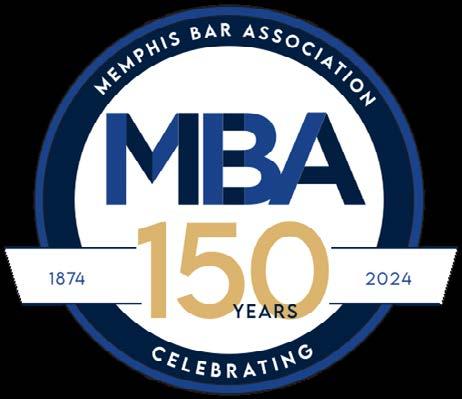

Join us in the beautiful Reading Room on the 4th floor; casual attire encouraged.
Friday, November 15, 2024
Approved for 6 Total CLE Hours (5.5 Dual CLE & .5 Gen CLE)



9:30 am - 10:45 am (1.25 Dual)
Cultivating a Calm Mind Presented by Dr. Mark Muesse, Ph.D.

11:00 am - 12:00 pm (1.0 Dual)
Enhancing Your Energy Throughout the Day Presented by Michelle Johns, LPC-MHSP, NCC, 500CYT
12:00 pm - 12:30 pm Lunch Break
12:30 pm – 1:15 pm (.75 Dual) Introduction to QPR Training
Presented by TLAP Clinical Director Lauren Castor, LPC-MHSP
1:15 pm – 1:45 pm (.5 Dual)
Ethics in Practice: How the Tennessee Lawyers Assistance Program (TLAP) Supports Legal Professionals in the Courtroom and Beyond Presented by Shelby County Circuit Court Judge Rhynette Hurd
2:00 pm – 3:00 pm (1.0 Dual)
Managing Stress: Your Body & Practical Exercise Tips Presented by Dr. Matt Hayden, DC, with guest personal trainer Mark Akin
3:15 pm - 4:15 pm (1.0 Dual)
Slow Your Roll - Mindfulness for Fast Times Presented by Leadership & Performance Coach Greg Graber



Student Sponsorships
Generously Provided by: Justice Janice Holder Laurie Christensen



BY LAURA DEAKINS
Most lawyers know Chief Justice Holly Kirby as a dark-robed assassin, firing well-reasoned questions disguised as grenades at you as you sweat through an oral argument, but she is also so much more than that. Justice Kirby is the great legal mind that you have always perceived her to be, but her brilliance is secondary to the perseverance she demonstrates and the glass ceilings she has shattered for so many others along her way.
I started my legal career watching her in action and learning from her daily before I went into private practice. During the four years I spent in chambers with her, I was privileged to know the real Justice Kirby, or “JK” as we affectionately called her.
Chambers was a happy place and a refuge from the adversarial nature of the legal world. It was all business when we were researching, drafting, re-drafting, and delving into cassette tapes of legislative history, but JK’s laugh also echoed through chambers. James Brown’s “I Feel Good” was also a constant, as this was our chamber’s theme song whenever we got an opinion filed. We had a well-stocked candy drawer, and no shortage of playful pranks. But despite the light-hearted chambers I experienced, getting to that point for Justice Kirby was not easy and required the type of laser focus and intentionality that few others possess, especially at the age by which she accomplished it.
Daughter of a traveling salesman and a secretary, her journey to the highest court in Tennessee after becoming the first woman on the Court of Appeals was not a fluke. Being a judge was something she wanted long before it was a reality for her. She had no lawyers in her family, but she knew the legal field was her calling.
Her first step in the process was to obtain a college scholarship. Even in her teens, she knew that being a woman in an underrepresented field could have its advantages. So, she did not go the traditional prelaw route of becoming an English or history major. She pursued engineering, receiving a full engineering scholarship, because so few women at the time were interested in pursuing that area. She knew even then she
could use her differences to her advantage.
She excelled in law school and clerked with Judge Harry Wellford immediately following. She maintained and fostered her relationship with Judge Wellford and his staff during her entire legal career, organizing lunches with Judge Wellford regularly before his passing. She also enlisted his beloved assistant, Ruth Bowen, to run her Court of Appeals chambers for over a decade. Ruth was the heart and soul of the office, as well as its comic relief. Never a dull moment with Ruth at the helm, Judge Kirby indulged the playfulness and embraced everyone’s quirks and the traits that made them who they were.
She combined her proximity with the people she met while clerking for Judge Wellford and created opportunities for herself, never simply waiting passively for them to come to her. Knowing that becoming a judge was her long-term goal, she never took her eye off the ball and surrounded herself with people she wanted to emulate, like Judge Julia Gibbons, and others who were firsts of their time.
She also postured herself strategically in private practice after clerking. Working at Burch Porter & Johnson allowed her to again use her femininity to put her at an advantage. She sharpened her skills as an advocate in the at-the-time relatively new area of employment law and sexual harassment litigation. Being female allowed her to educate her corporate clients in ways her male counterparts could not and eventually led to her becoming the first female partner at the firm.
However, her successful tenure as an advocate was short lived. She knew she was always better suited for the bench and that is where her heart wanted to be. Being a decisionmaker and pursuing what she really thought about a given legal issue always appealed to JK, more than being an advocate for a respective client’s position. She understood the responsibility that the office carried and undertook that challenge with grace and integrity, even at the young age when she was appointed to the Court of Appeals, a youthful 38.
But this judicial appointment also was not without

its challenges. Unlike her exclusively male counterparts on the Court of Appeals when she was appointed as the first female judge in 1995, Judge Kirby also had two young school age children at the time, Scott and Brooke. She was always a mother first.
So, where other green newbies would have done anything possible to avoid rocking the proverbial boat, she was unapologetic in speaking up to allow for small accommodations that would allow her to juggle it all. For instance, the other members of the Court had been experimenting with the idea of moving oral arguments an hour earlier. However, even as a freshman on the Court, she politely requested that oral arguments be kept at 9:30 am to allow her (and presumably other attorneys with children) that special morning time to take her children to school. To their credit, the fellow members of the Court were more than happy to accommodate these kinds of requests and recognized the small gestures that would make all the difference in supporting their colleague.
JK served on the Court of Appeals bench for 19 years until one day in my third year of clerking, we headed to an 11:30 Holiday Ham lunch, as we so often did.
But on this occasion, Judge Kirby received a phone call as we were piling in the car. We were still parked, as she looked down at her incoming call and relayed to us, “It’s the Governor.” She immediately hopped out onto the sidewalk to take the call we had all been waiting on, as we watched from inside the car with bated breath. She flashed us that infamous Kirby smile and huge thumbs up as she could not contain her excitement and happy tears. As the Jeffersons would say, “We Were Movin’ on Up” to the Supremes.
Forever a sucker for a J.Crew sale, JK always looked the part of a justice. But she did have to grow into this position in other ways.
Watching her rise to the challenge in her first year as a justice was quite inspiring. Though most people see her as an eloquent public fixture behind a podium, in her heart of hearts, she is an introverted homebody. Her best opinions were drafted at her house in her sweatpants. We would go days without seeing her, simply tasked with dropping off banker’s boxes filled with appellate records on her front porch. She would emerge days later with a perfectly drafted 75-page opinion in tow. At her core, she is a book nerd, but she rose to the challenge of being the public personality that everyone knows and loves.

She understands the importance of this public role as a justice, and though she would rather simply be engulfed in legal research and engineering opinions, she puts her comfort zone aside to meet the public needs of the justice position daily. Working for her in those four years not only exposed me to the way her brilliant engineering mind structured opinion after opinion, but it also gave me insight into the kind of mother, wife, and friend that she was behind the gavel as well. She was never afraid to assert herself or put herself in a situation that was initially foreign to her. She embraced change and always rose to the occasion. Her confidence in herself and her unyielding integrity toward the position and the law are her superpowers. My time as a law clerk for JK has forever changed my appreciation for the judicial system and bettered me as a lawyer.
I worked for one more year at the Supreme Court with now Chief Justice Kirby. She undertook and understood the responsibility and power that this policymaking Court required. After 19 years, she had mastered the art of opinion writing and “Kirbizing” as we would call it, but this new role required so much more in terms of being the public face of the judiciary.
I am forever fortunate to have learned how to navigate the legal arena with the grace and intangible skills she demonstrated for me daily during those four years. Her integrity, purposefulness, and innate sense of what is right, reasonable, and fair is unparalleled. With Chief Justice Kirby leading the judiciary in Tennessee, no other words can accurately describe the sentiment other than “I Feel Good.”

BY MALIK LUCKETT
Afairday’s work being worth a fair day’s wage is one of the basic principles of American society and an objective of the labor movement, trade unions, and other worker’s groups. This principle encapsulates the fundamental idea that an individual’s work should be fairly compensated with a corresponding amount of pay. The principle reflects the concept of equitable exchange, i.e., whether the value of an individual’s time and effort is directly proportional to the compensation received. The federal Fair Labor Standards Act (“FLSA”) requires that when most workers work more than forty hours in a week, they receive an increased rate of pay.
On April 23, 2024, the United States Department of Labor announced a final rule—Defining and Delimiting the Exemptions for Executive, Administrative, Professional, Outside Sales, and Computer Employees—that took effect on July 1, 2024. The Department of Labor’s new overtime regulation supposedly attempts to restore and extend this commitment to millions more lower-paid salaried workers in the United States by increasing the minimum salary threshold that helps define and delimit which salaried workers are entitled to overtime pay under the FLSA.
1. What is the current regulation responsible for the protection of employees’ overtime compensation?
Under the FLSA, employers must generally pay an overtime premium of 1.5 times an employee’s regular rate of pay for all hours worked beyond forty hours in a work week, unless the employee falls under an exemption. To qualify for the so-called white-collar exemptions—the executive, administrative, and professional exemptions— employees must meet three criteria: be paid on a salary basis, be paid at least the designated minimum weekly salary, and perform certain duties.
2. How does the new regulation differ from ones formerly in place?
Under the new rule, on July 1, 2024, the salary threshold for the white-collar exemptions increased from approximately $35,000 to approximately $44,000 and will leap to nearly $59,000 at the start of 2025. Employees will need to earn at least this new threshold salary to be considered exempt from overtime pay under the white-collar exemptions. In addition to raising the salary threshold, the rule also requires that the salary threshold be automatically updated every three (3) years starting on July 1, 2027. The rule also requires that the threshold for the “highly compensated employee”

exemption increase to $132,964 on July 1, 2024, then to $141,164 on January 1, 2025—an approximately 35% increase from the current threshold of $107,432. The “high compensated employee” threshold will also be updated every three (3) years.
3. Have courts addressed the implementation of this regulation yet?
In an attempt to block the new rule, a coalition of business groups filed a complaint in the United States District Court for the Eastern District of Texas on May 22, 2024. The lawsuit, Plano Chamber of Commerce v. U.S. Dep’t of Labor, No. 24-468, claimed that the United States Department of Labor lacked the power to adopt the rule and that the rule would force businesses to cut jobs and limit workers’ hours. The business groups further alleged that the Labor Department exceeded its authority by setting the salary threshold too high and requiring automatic increases every three (3) years. The court combined Plano with Texas v. U.S. Dep’t of Labor, No. 24-499, which sought nationwide injunctive relief to prevent the rule from going into effect on July 1, 2024. On June 28, 2024, the court granted a limited injunction blocking the rule from taking effect only as applied to the State of Texas an employer. Texas v. U.S. Dep’t of Labor,
No. 24-499, 2024 WL 3240618 (E.D. Tex. June 28, 2024). And in a third case, Flint Avenue, LLC v. U.S. Dep’t of Labor, No. 24-130, in the Northern District of Texas, a private employer requested a nationwide injunction to block the rule from taking effect on July 1, 2024. The court denied the injunction because the plaintiff did not establish irreparable harm.
These Texas lawsuits did not come as a surprise, as they track a similar challenge to the Obama administration’s 2016 rule—a separate attempt to dramatically increase the threshold. (In fact, two of the 2024 lawsuits were filed in the Eastern District of Texas.) Days before the Obama-era rule was to take effect in 2016, the court temporarily blocked the rule and later permanently blocked it in a 2017 order. That court determined that the threshold was too high because it “essentially make[s] an employee’s duties, functions, or tasks irrelevant if the employee’s salary falls below the new minimum salary level.” The court also prohibited the Department of Labor from automatically increasing the salary threshold without following certain requirements under the Administrative Procedures Act, such as providing notice and allowing the public an opportunity to comment. In the Plano lawsuit, the business groups stated that the Department’s 2024 overtime rule largely repeated the errors of the 2016 rule and failed to address the Texas district court previously identified.
The Supreme Court decided Loper Bright Enterprises v. Gina Raimondo, Secretary of Commerce, 144 S. Ct. 2244 (2024) in June 2024. Loper Bright overruled Chevron U.S.A. v. Natural Res. Def. Council, 467 U.S. 837 (1984) and held that courts do not need to defer to an agency’s interpretation of law because a statute is ambiguous. Loper Bright held that courts must exercise their independent judgment in deciding whether an agency has acted within its statutory authority, as the APA requires. Careful attention to the judgment of the Executive

Branch may help inform that inquiry. And when a particular statute delegates authority to an agency consistent with constitutional limits, courts must respect the delegation, while ensuring that the agency acts within it. But courts need not and under the APA may not defer to an agency interpretation of the law simply because a statute is ambiguous.
144 S. Ct. at 2273.
Now that Loper Bright removed Chevron deference, the parties in Plano, Texas, and Fifth Avenue are briefing summary judgment, and the courts may issue rulings before the January 1, 2025 increase takes effect.
Employers should review applicable state laws. Certain jurisdictions have higher, stricter, or different wage and hour requirements than the FLSA. Tennessee, Mississippi, and Arkansas generally do not have different exemptions or exceptions to overtime requirements, but the Legal Age to Work Regulations differ. Other jurisdictions have different exemptions or exceptions, including some that dispense with salary thresholds entirely.
If you are an overtime-exempt employee who will be reclassified to a newly non-exempt position, continue to monitor the Department of Labor’s Wage and Hour Division website and keep yourself abreast of the potential changes. Some of the specifics you may want to cover include scheduled hours, overtime approval policies, timekeeping procedures, and the prohibition of off-theclock work. This list is not exhaustive.
If you are an employer, although a court may still block all or part of the rule, you should begin preparing for the new rule to take effect as planned, as you cannot count on the rule being judicially halted given the uncertain nature of litigation. If millions of additional workers will soon be eligible for overtime pay due to the new threshold, employers will need to act quickly to ensure that their pay practices align with this significant change.
Malik Luckett is an associate attorney in the Fisher Phillips Memphis office, where he defends employers in a wide range of employment law matters. Malik received his Juris Doctor from the University of Memphis Cecil C. Humphreys School of Law and his bachelor’s degree from the University of Tennessee. During law school, Malik worked as an extern for the United States District Court for the Western District of Tennessee and for the United States Attorney’s Office for the Western District of Tennessee. He also served as a Notes Editor of The University of Memphis Law Review and was a member of the Constance Baker Motley National Mock Trial Team. Malik is currently the coach for the Houston High School Mock Trial Team and has served on the board of the Memphis Bar Association Young Lawyers’ Division since 2023.


is the time. CLC is the place.
BY AUSTIN BROWN, DIRECTOR OF DEVELOPMENT AND COMMUNICATIONS
justice. Changing lives. This mantra is the living embodiment of the Community Legal Center. I believe this mantra means everything to our staff and those who support us. It means so much to us because a mother of three earning $50,000 a year may not qualify for free legal services or legal aid from other organizations, but she can receive help from us at a low cost. This is what makes us special: we serve hardworking Memphians who don’t want to slide into poverty due to inadequate access or inability to pay for an attorney. Our clients range from educators and factory workers to caretakers, nurses, and many others. These folks are the backbone of our society, and many of them are overlooked. Our clients are fighting hard to make a living and simply are not in a position to acquire a private attorney when a legal problem arises.
Thirty years ago, our founders saw the need for access to mediation services and quickly pivoted to providing direct legal services when they saw a greater need existed than they originally believed. Helping the overlooked has always been woven into the fabric of who we are at CLC. We punch well above our weight for a staff of thirteen individuals, including five attorneys. Last year alone, we served 2,500 people and received nearly 6,000 calls. The gap between calls received and amount of people we were able to help is simply due to our lack of capacity to serve everyone who reaches out to us. Nothing crushes us more.
Fortunately, like our founders 30 years ago, we are doing what we can to fill the community’s evolving legal needs as much as we can. When we witnessed the pressing need for legal services for our immigrant community and for parents seeking a divorce who could not afford one, we added our Immigrant Justice Program and the Pro Se Parents’ Clinic. We recently moved to a new, larger office in Brinkley Plaza to put ourselves in the position for expansion to better serve our community. The truth is that we do not have enough attorneys and support staff, and neither do our other friends in the public interest law space. A third of Memphis qualifies for our services. When we include organizations that focus on

serving people under 125% of the poverty line, roughly half of our beloved city qualifies for free or reduced legal services, making the need for public interest attorneys exponential.
A 2015 Economic Impact Study of Legal Aid Organizations in TN, commissioned by the Tennessee Bar Association’s Access to Justice Committee, found that every dollar invested into public interest law generates $11.21 of impact in our communities—and that was in 2015’s dollars, not 2024. This is a testament to how life-changing our work is and should encourage our legal community to learn more about our work. This $11.21 for every $1 invested is not just a statistic: it is a grandmother who can pass down generational wealth through proper estate planning, an immigrant who can now legally contribute to our economy with a work permit, or a single mother who successfully obtains child support to help nurture her child. These are all real people behind these statistics, and they deserve our attention. I’ve seen the sheer joy clients experience when we help. One morning when I was pulling into our old office on Adams, I witnessed a man and his family in our parking lot dancing in celebration for having finally received a divorce from his estranged wife who he had not seen in nearly 15 years. After realizing he was now a
single father, the gentlemen did not know where to turn. The moment was so traumatic for him and his daughter that he completely moved homes and put her in a new school. Years after sweeping his want of a divorce from his estranged wife under the rug, this gentleman decided enough was enough and decided to put that chapter behind and start a new one. After discovering he could not afford a private attorney, referrals and our website led him to CLC. The rest is history. We finalized his divorce within a year and provided him with a newfound sense of freedom and peace of mind. He’s no longer scared of passing away with his wife coming back to claim his assets. He no longer has to live with the cloud over his head of being married to someone who does not want anything to do with him or their family. Most importantly, the gentleman can move on with his life. This is what CLC and public interest law are all about: seeking justice and changing lives.
Thirty years is a long time, but we want to see CLC exist and thrive thirty years from now and beyond. Our work directly leads to positive change in our neighbors’ lives, and I truly believe our impact can be felt on a greater level as we continue to scale our services. It truly is a pleasure of a lifetime serving as the Director of Development and Communications for CLC. Advocating for our clients and staff is an honor because I would not exist without them. Fundraising and grants are what allow us to keep our fees affordable. And our mission is what drives this all. I challenge the Memphis legal community to open its eyes more to the needs of our community and the impact access to justice has on one’s life. You can volunteer your time with us, visit our office, or visit our website to learn more or donate at ww.clcmemphis.org/donate. You can also purchase a table or ticket to our upcoming 30th Anniversary Celebration at Crosstown Theater on
November 8 from 7:00 pm - 9:00 pm. More information about this event is available on our website or directly on our ticket sales page at https://www.eventbrite.com/e/ justice-jubilee-an-international-celebration-for-30-yearsof-the-clc-tickets-980447263157.
Our mission is to provide quality, affordable legal services to those with moderate to low income. Will you join me in our mission by learning and spreading awareness and addressing the need head-on? Yes, we need funds and yes, we need more resources, but I also understand it is tough to provide these things when our role in the community may be unknown to some. This must change. Our 30th Anniversary is the perfect opportunity for everyone to rally around our cause, and join me in challenging their colleagues, loved ones, and others to spread awareness of our services and our community’s great need for them. Together we can make a difference, seek justice, and change lives. Will you join us?

Mr. Brown joined the Community Legal Center team in May 2023. He graduated from Christian Brothers University in 2021, studying history and political science. While attending CBU, he served as philanthropy chair in Sigma Alpha Epsilon and was involved in a myriad of other organizations. His love for development came during an internship at CBU’s Office of Advancement while completing his undergraduate studies. Austin served as Leadership Memphis’s Development and Alumni Engagement Coordinator before joining the CLC. He hit the ground running, starting his role two weeks after graduating. At Leadership Memphis, he gained valuable experience liaising with C-Suite executives, board management, program development and implementation, and much more.

BY PROFESSOR REGINA LAMBERT HILLMAN
The Court Overrules Chevron, 6-3 Loper Bright Enterprises v. Raimondo, 144 S. Ct. 2244 (2024), consolidated with Relentless, Inc. v. Department of Commerce.
On June 28, 2024, the Supreme Court released a major ruling in two consolidated cases striking down its 1984 landmark decision in Chevron v. Natural Resources Defense Council, which developed the doctrine of “Chevron deference.” Chevron deference required courts to defer to a federal agency’s reasonable interpretations of ambiguous statutes that Congress charged them with enforcing. In the case’s forty-year history, it became one of the most consequential rulings on federal administrative law and, with more than 18,000 cites, one of the cases most cited in American law. The Supreme Court, which cited Chevron over seventy times to decide cases, had not cited the case since 2016, with several justices criticizing the case in recent years.
Authored by Chief Justice Roberts on behalf of the six-member conservative majority, the Court determined Chevron deference was inconsistent with and a violation of the Administrative Procedure Act (APA), which sets out procedures for federal agencies to follow and provides instructions for courts to review those agency actions. According to the majority, agency deference is incompatible with the APA because the APA requires courts to exercise independent judgment to determine whether an agency’s interpretation is accurate. The majority rejected the notion that agencies were better positioned to make reasonable determinations of statutory ambiguities based on their expert technical proficiency and specialized knowledge, noting that Congress expects courts to handle such issues and that courts could overcome their lack of expertise through

party and amicus briefs. The Court added that an agency’s interpretation could still be considered, but not deferred to, via Skidmore deference1 if the statutory ambiguity relates to a statute the agency administers.
Chief Justice Roberts identified Chevron deference as “unworkable”—an accepted ground for disregarding stare decisis and overruling precedent—based on (1) the difficulty of determining whether a statute was ambiguous, (2) the Court’s “constant tinkering” with the doctrine, (3) the Court’s failure to rely on Chevron for eight years, and (4) because it “allows agencies to change course even when Congress has given them no power to do so.”2 The decision clarified that earlier cases would not be impacted because “[m]ere reliance on Chevron [alone] cannot constitute a special justification for overruling” a decision upholding an agency action.
In a harshly critical dissent, Justice Kagan, joined by Justices Sotomayor and Jackson,3 found the majority decision to be a “judicial power grab,” noting Congress
1 In Skidmore v. Swift & Co., 323 U.S. 134, 139–40 (1944), the Court explained that the “interpretations and opinions” of the relevant agency, “made in pursuance of official duty” and “based upon . . . specialized experience,” “constitute[d] a body of experience and informed judgment to which courts and litigants [could] properly resort for guidance,” even on legal questions.
2 See Montejo v. Louisiana, 556 U.S. 778, 792 (2009) (“[T]he fact that a decision has proved ‘unworkable’ is a traditional ground for overruling it.”); Planned Parenthood of Se. Pa. v. Casey, 505 U.S. 833, 854 (1992) (plurality opinion) (stating that rules in a prior decision may ultimately “prove[] to be intolerable simply in defying practical workability”).
3 Justice Jackson dissented in Relentless but recused herself in Loper
routinely enacts regulatory statutes that it knows will inevitably have some ambiguities for specialized agencies to interpret. The issue, according to Justice Kagan, was who should decide which reasonable statutory interpretation prevails, noting that for forty years the answer was correctly the agency charged with the statute’s enforcement based on its technical and scientific expertise. The dissent also recognized Chevron’s “deep roots” over decades, noting it “has become part of the warp and woof of modern government, supporting regulatory efforts of all kinds.” Finally, the dissent criticized the majority, pointing out that it had given “itself exclusive power over every open issue—no matter how expertise-driven or
policy-laden—involving the meaning of regulatory law” in “one fell swoop.”
While some described the Court’s decision as an end to unlawful agency overreach, Justice Kagan predicted that the decision “will cause a massive shock to the legal system” with far-reaching implications as hundreds of judges across the U.S. who lack expertise on complex, technical issues will likely reach inconsistent results. While Congress can explicitly provide agencies with the power to make specific determinations, ultimately, the Loper Bright decision takes power away from the executive branch and gives that power to the judiciary.
The Court Finds Absolute Immunity/Presumptive Immunity for All Official Acts, 6-3
Trump v. United States, 144 S. Ct. 2312 (2024).
Trump v. United States involves former President Trump’s four-count indictment for conspiracy to overturn the November 2020 election by spreading knowingly false claims of election fraud while he was still in office. Trump argued that a president has absolute immunity from criminal prosecution for all actions taken within his official responsibilities and moved to dismiss the indictment. The district court denied the motion and held that former presidents do not have federal criminal immunity for any acts. The D.C. Circuit affirmed the decision, holding as a matter of first impression that the separation of powers doctrine does not bar federal criminal prosecution of a former president for every official act.
On July 1, 2024, the six-member conservative majority of the Court held that a former president is entitled to absolute immunity from criminal prosecution for certain official actions within his “conclusive and preclusive constitutional authority.” Further, he is entitled, at a minimum, to presumptive immunity from criminal prosecution for all other official acts. In those cases, the Court explained that the burden falls on the government to prove criminal prosecution would “pose [no] ‘dangers of intrusion on the authority and functions of the Executive Branch.’”4 Finally, a president has no immunity for unofficial acts.5
4 Trump v. United States, 144 S. Ct. 2312, 2331–32 (2024) (citing Nixon v. Fitzgerald, 457 U.S. 731, 754 (1982)).
5 Justice Barrett disagreed, finding juries should be able to consider
According to the majority, when making an immunity inquiry, the first step is to distinguish official from unofficial acts, a distinction courts had never been required to draw. The Court stated that presidential immunity extends to the outer perimeter of a president’s official responsibilities unless they are “manifestly or palpably beyond” his authority and restricting the acts would not impede future legitimate Executive Branch functions. Additionally, when making this determination, courts are not permitted to inquire about a president’s motive, and a jury is not permitted to learn of other parts of a criminal conspiracy that may involve official acts.
Chief Justice Roberts commented that “the President may discuss potential investigations and prosecutions with his Attorney General and other DOJ officials” and identified investigative and prosecutorial decisionmaking as part of a President’s executive power. The Court did not address whether Trump’s actions to prevent the peaceful transfer of power were official acts, instead vacating the D.C. Circuit’s judgment and remanding the case to the trial court judge to determine which elements of the indictment count as official and unofficial acts.
While the majority emphasized that the president “is not above the law,” in dissent, Justice Sotomayor, joined by Justices Kagan and Jackson, countered that if a future president “misuses official power for personal gain, the criminal law that the rest of us must abide will not provide
the context of a criminal act, but the five remaining members of the majority held otherwise.

a backstop.” She further stated that, according to the majority, “any use of official power for any purpose, even the most corrupt purpose indicated by objective evidence of the most corrupt motives and intent, remains official and immune” and that “the category of Presidential action that can be deemed ‘unofficial’ is destined to be vanishingly small.”
The Court Withdraws Grant of Certiorari Before Judgment as “Improvident,” Dismissed Moyle v. United States, 144 S. Ct. 2015 (2024), joined with Idaho v. United States.
Two joined cases, Moyle v. United States and Idaho v. United States raise the issue of whether a federal law aimed at ensuring emergency care for any patient supersedes Idaho’s ban on abortion, one of the nation’s strictest laws that provides only a narrow exception to prevent the death of the mother. The federal government sued Idaho, asserting that it could not enforce the ban in situations covered by the federal Emergency Medical Treatment and Labor Act (EMTALA). Under EMTALA, a hospital receiving Medicare funding must provide necessary stabilizing treatment in its emergency room to a patient presenting with an emergency medical condition. The government argued that EMTALA prevented Idaho from prohibiting abortions in hospitals when one was needed to prevent serious harm to the woman’s health, an exception not included in Idaho’s law.
The district court granted a preliminary injunction
preventing enforcement of the law in the circumstances that would violate EMTALA. The Ninth Circuit Court of Appeals declined to grant a stay, Idaho asked the Supreme Court to intervene, and the Supreme Court stayed the ruling and granted Idaho’s petition for certiorari before judgment. On June 27, 2024, the Court dismissed the writ of certiorari before judgment and vacated the stays it had entered earlier in a single sentence per curium opinion, declaring that the case had been “improvidently granted.” The Court’s dismissal reinstated the lowercourt ruling staying the ban and temporarily clearing the way for women in the state to receive an abortion when their health is at risk while the case proceeded. The Court did not address the merits of the case or the underlying question regarding state versus federal law, which continues to be litigated in the lower courts.
The Court Upholds Law Disarming Domestic Abusers, 8-1 United States v. Rahimi, 144 S. Ct. 1889 (2024).
On June 21, 2024, the Court released its opinion addressing whether a federal statute prohibiting the possession of firearms by individuals subject to domestic violence restraining orders violated the Second Amendment, limiting its significant 2022 decision that vastly expanded rights under the Second Amendment. The 2022 decision, New York State Rifle & Pistol Association v. Bruen, established a right to carry guns outside of the home and introduced a new test to evaluate the constitutionality of gun control laws based on historical practices.6 In United States v. Rahini, the 8-1 majority Court retreated from its favorable line of gun rights holdings, announcing that Second Amendment rights have limits and that the government can outlaw
6 New York State Rifle & Pistol Ass’n v. Bruen, 597 U.S. 1 (2022).

gun possession from people subject to restraining orders for domestic violence.
Authoring the majority opinion, Chief Justice Roberts clarified that the Bruen history and tradition test utilized to determine if a gun law is constitutional should focus on broad principles, not an exact historical match, explaining that “the appropriate analysis involves considering whether the challenged regulation is consistent with the principles that underpin our regulatory tradition.” Further, Chief Justice Roberts noted that “[s]ince the founding, our nation’s firearm laws have included provisions preventing individuals who threaten physical harm to others from misusing firearms.” Therefore, the Court held that if a restraining order finds that a person “poses a credible threat to the physical safety of an intimate partner, that individual
may—consistent with the Second Amendment—be banned from possessing firearms while the order is in effect.”
The three Trump-appointed Justices each wrote a concurring opinion joining the majority. The three liberal Justices also joined the majority, writing two concurring opinions. Justice Sotomayor, joined by Justice Kagan, welcomed the clarification of the Bruen standard, noting that it now “permits a historical inquiry calibrated to reveal something useful and transferable to the present day.” Justice Jackson’s concurrence pointed out that the earlier Bruen opinion had deeply confused lower courts and that the current case was an acknowledgment of the
need to provide clarification of its earlier opinion.
Justice Thomas, the lone dissent, authored the 2022 Bruen decision. He vigorously disagreed with the Court's majority, stating that there was not “a single historical law revoking a citizen’s Second Amendment right based on possible interpersonal violence.” Thomas argued that a person should not be stripped of their Second Amendment right due to a protective order, stating that the way to disarm dangerous people is by prosecution for criminal violence.
The decision has been viewed as a win for those supporting gun regulations and will likely make legal challenges to gun laws less difficult.
The Court Expands Employer Risk of Discrimination Claims from Job Transfers, 9-0
Muldrow v. City of St. Louis, 144 S. Ct. 967 (2024).
In Muldrow v. City of St. Louis, the Court addressed whether Title VII7 is violated when an employer transfers an employee for a discriminatory reason absent a showing of a resulting “significant” employment disadvantage. While a job transfer is not specifically listed in the language of Title VII, courts have nearly unanimously held that it falls within Title VII’s “otherwise discriminate” clause.8
Before Muldrow, courts historically agreed that employees must prove an adverse employment action resulting in a job-related disadvantage to succeed in a Title VII discrimination claim and that major decisions, including hiring, firing, demoting, reducing pay, or denying a promotion, satisfy the adverse action requirement. Muldrow addressed whether a job transfer without a change in rank or salary can also be brought in a Title VII discrimination claim. The trial court and Eighth Circuit held that along with proving discriminatory treatment that caused the transfer, an employee must also
7 Under Title VII, it is an “unlawful employment practice” for an employer “to fail or refuse to hire or to discharge any individual, or otherwise to discriminate against any individual with respect to his compensation, terms, conditions, or privileges of employment, because of such individual’s race, color, religion, sex, or national origin.” Title VII of the Civil Rights Act of 1964, as amended, 42 U.S.C. § 2000e-2(a) [Title VII]. Title VII applies to employers with fifteen or more employees and protects job applicants and current, temporary, and former employees in employment settings. Id. at § 2000e(b).
8 In Muldrow v. City of St. Louis, both parties agreed that a job transfer “implicated ‘terms’ and ‘conditions’ of [the plaintiff’s] employment, changing nothing less than the what, where, and when of the plaintiff’s police work.” 144 S. Ct. 967, 974 (2024).
prove resulting “substantial” harm. The Supreme Court granted certiorari to resolve a circuit split over whether an employee was required to meet a heightened threshold of harm.
In what has been described as a victory for workers and workplace equality, on April 17, 2024, the Court held that for an employee to successfully allege a discriminatory job transfer under Title VII, she must prove differential treatment that is a “disadvantageous” change in employment terms or conditions and show that as a result, she suffered “some harm,” rejecting that the resulting harm had to be “significant.” Noting that Title VII does not quantify how “much worse” the treatment must be to qualify for Title VII’s protection, the Court determined the harm suffered during a transfer did not have to be equally significant to the harm suffered by failing to hire or by terminating an employee, so long as “some harm” is shown that “concerns the terms or conditions of [] employment.” The Court described potential “harms” as changes in “responsibilities, perks, and schedule,” as well as changes to “the what, where, and when” of an employee’s work responsibilities. Finally, the opinion acknowledged the sweeping nature of the ruling and noted the holding “lowers the bar Title VII plaintiffs must meet.”
Justices Thomas, Alito, and Kavanaugh each filed a concurring opinion that joined but criticized the majority. Justice Alito found the opinion “unhelpful” because it failed to provide needed guidance regarding the meaning of multiple terms used in the opinion.

Justice Thomas described the harm required as “more than trifling,” while Justice Kavanaugh noted that “some harm” was neither used nor defined in Title VII and that nearly every transfer would meet that standard.
Muldrow makes clear that a job transfer that maintains the employee’s salary, benefits, and other tangible employment benefits is still vulnerable to a forced transfer

discrimination claim. Lesser nontangible effects of a job transfer, such as a different work schedule, less favorable office, or new work assignments may be actionable if they result in “some harm,” although Muldrow does not define the limits or meaning of the term. Muldrow may also support other nontermination decisions in the employment context beyond job transfers.
Professor Regina Hillman joined the faculty at the University of Memphis Cecil C. Humphreys School of Law in 2017. Her courses include Legal Methods I & II, Professional Responsibility, Gender & the Law, and Advanced Con Law – Individual Rights. Professor Hillman’s scholarship focuses on the progression of LGBTQ+ rights, the expansion of federal nondiscrimination protections to the LGBTQ+ community, and the ongoing challenges to full citizenship and equality for LGBTQ+ Americans. She serves as the Faculty Advisor to the University of Memphis Law Review, the Student Bar Association, OUTLaw, the law school’s LGBTQ+ student organization, and as immediate past-Co-Chair of the University of Memphis Pride & Equity Alliance.
Professor Hillman earned her J.D. summa cum laude from the University of Tennessee College of Law and was inducted into the Order of the Coif. During law school, she was the Editor-in-Chief of the Tennessee Law Review. She earned her B.A. summa cum laude from the University of Memphis. Following law school, Professor Hillman’s legal practice focused on commercial business and healthcare litigation, commercial contract disputes, environmental matters, and labor/employment issues.
In 2013, Professor Hillman was an organizing member of the Tennessee Marriage Equality Legal Team that challenged Tennessee’s constitutional and statutory bans that prevented recognition of valid out-of-state same-sex marriages. Filed in the fall of 2013, the Tennessee case, Tanco v. Haslam, was consolidated in 2015 with Sixth Circuit cases from Michigan, Ohio, and Kentucky to become Obergefell v. Hodges when the Supreme Court granted certiorari. The Obergefell case challenged both state prohibitions on same-sex marriages and bans preventing the recognition of valid out-of-state samesex marriages. Obergefell v. Hodges was decided by the United States Supreme Court on June 26, 2015, resulting in nationwide marriage equality.




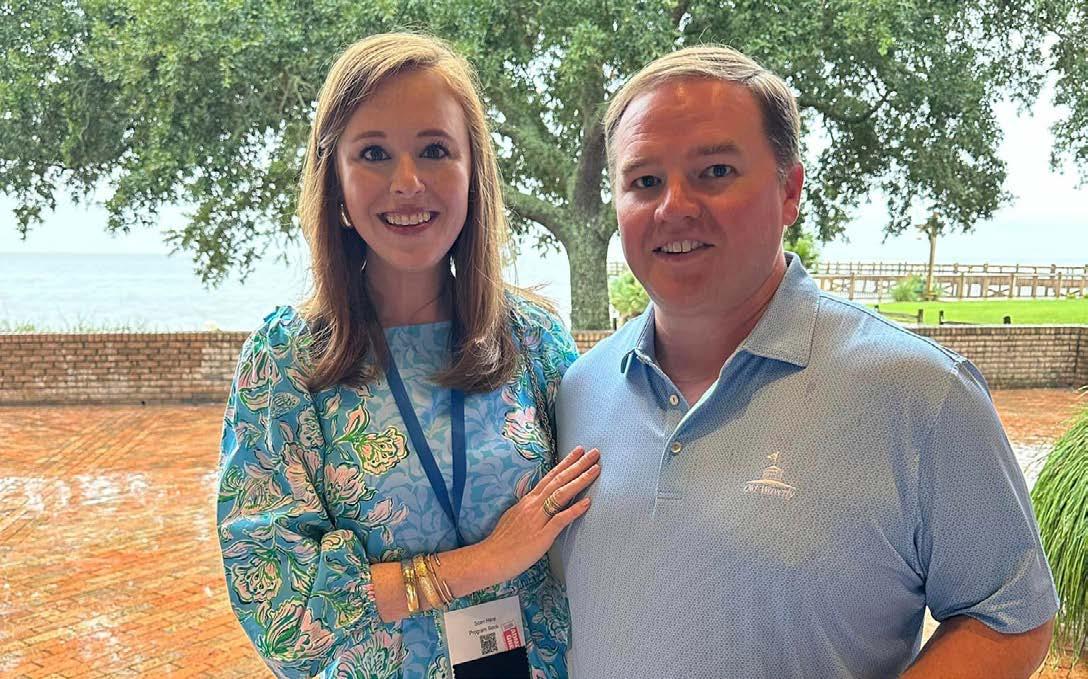

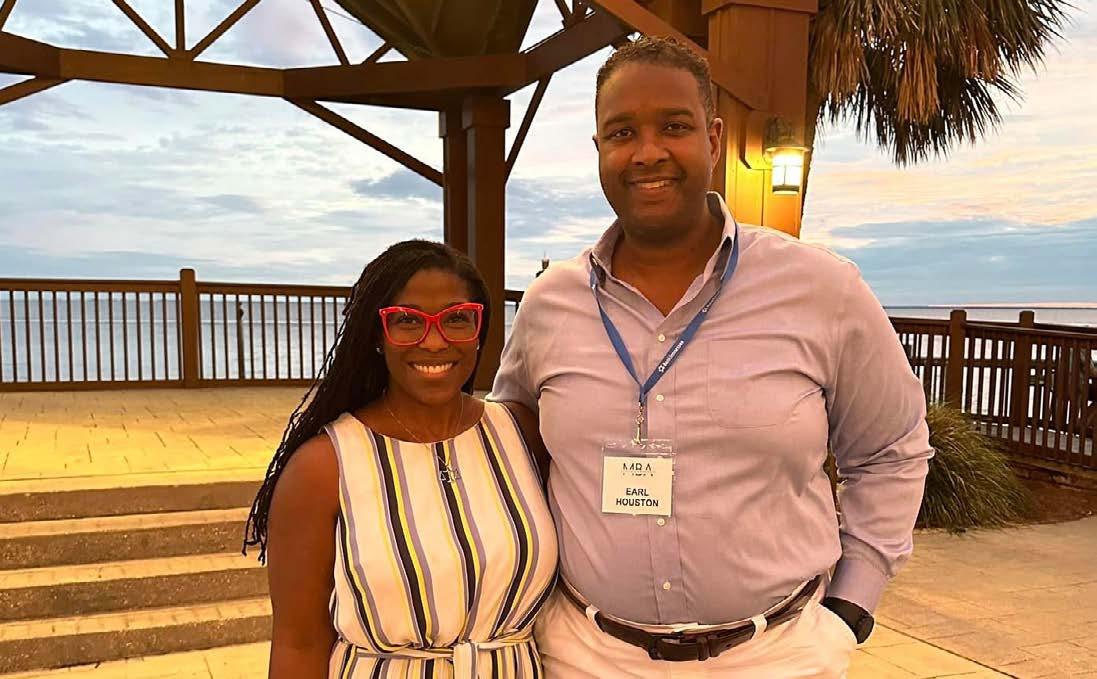







THURSDAY, NOVEMBER 14, 2024
4:00 PM - 5:30 PM (CLE)
5:30PM - 6:30 PM (HAPPY HOUR)
1.5 GEN CLE HOUR AT NOVEL BOOKSTORE 387 Perkins Extended, Memphis, TN 38117
Join the MBA for an inspiring panel discussion comprised of local attorneys who have authored books. Register Now


ATTORNEY BILL HALTOM
Why Can’t Mother Vote? Joseph Hanover And The Unfinished Business of Democracy

ATTORNEY CARLISSA SHAW
Twenty Something: Lessons, Reflections, and Survival Tips for Your 20s and Beyond
ATTORNEY PRINCE CHAMBLISS
Prince of Peace: A Memoir of an African-American Attorney, Who Came of Age in Birmingham During the Civil Rights Movement

ATTORNEY ANNE HAMER
Fearless Freedom: A Divorced Lawyer’s Guide to Divorce


Sponsored by:
ATTORNEY & LAW PROFESSOR DANIEL KIEL
The Transition: Interpreting Justice from Thurgood Marshall to Clarence Thomas
ATTORNEY ABBY SALA (Moderator)


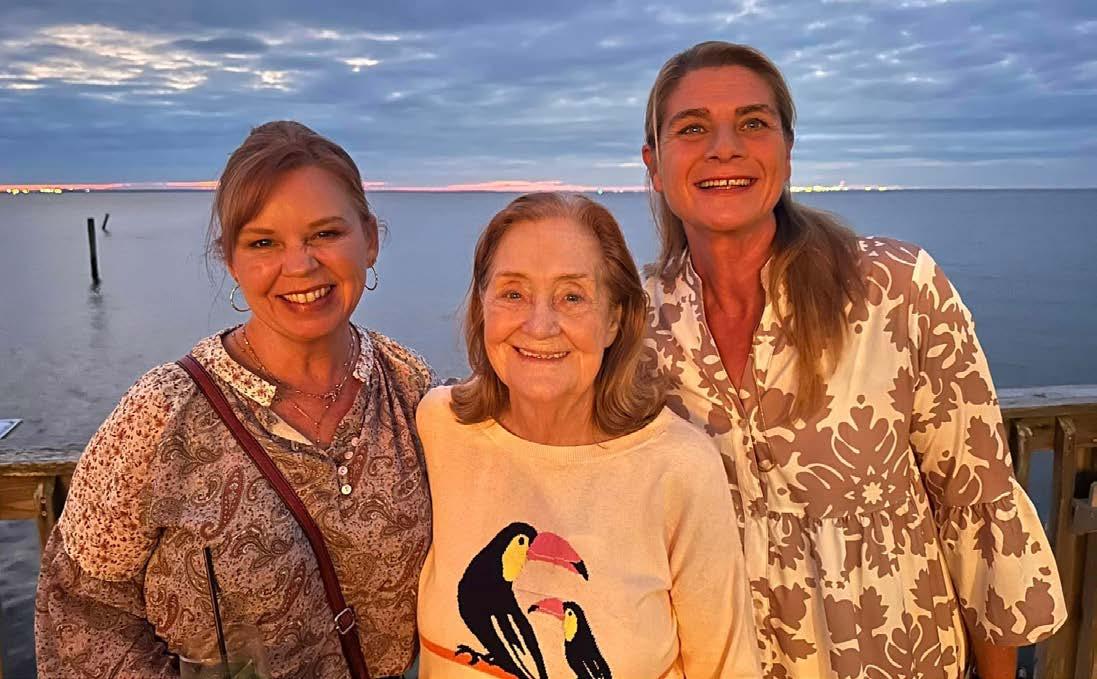


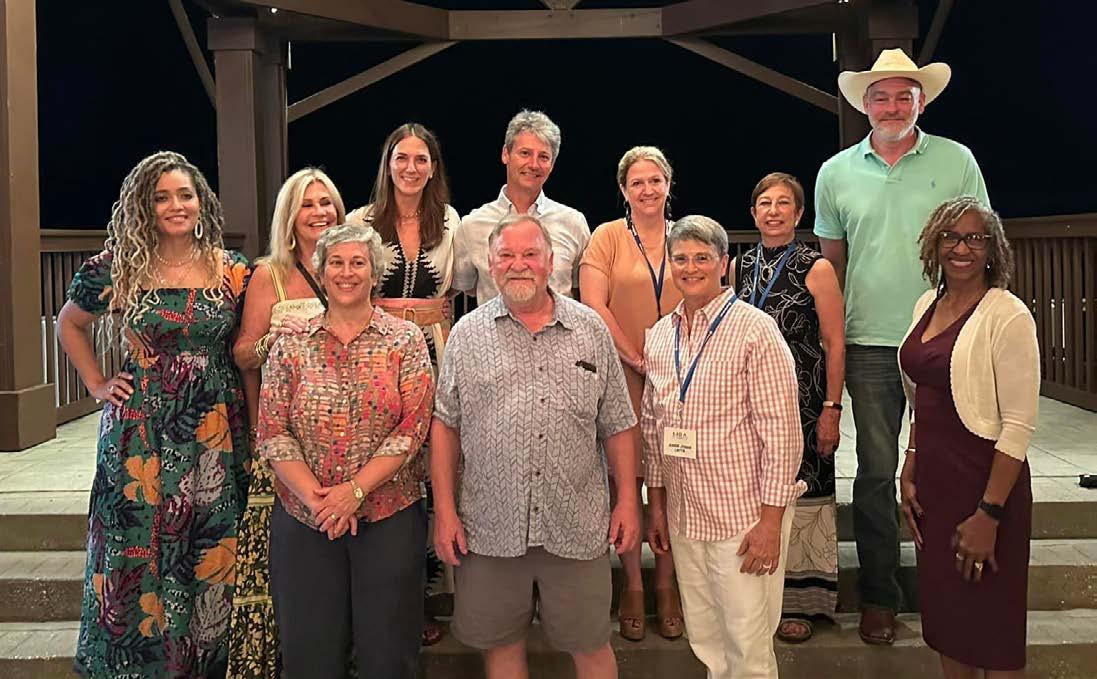







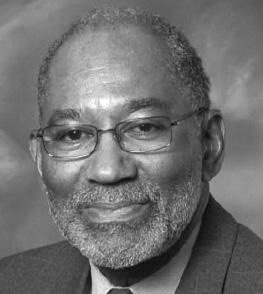

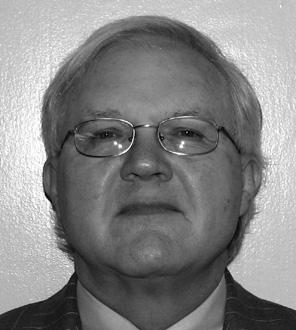







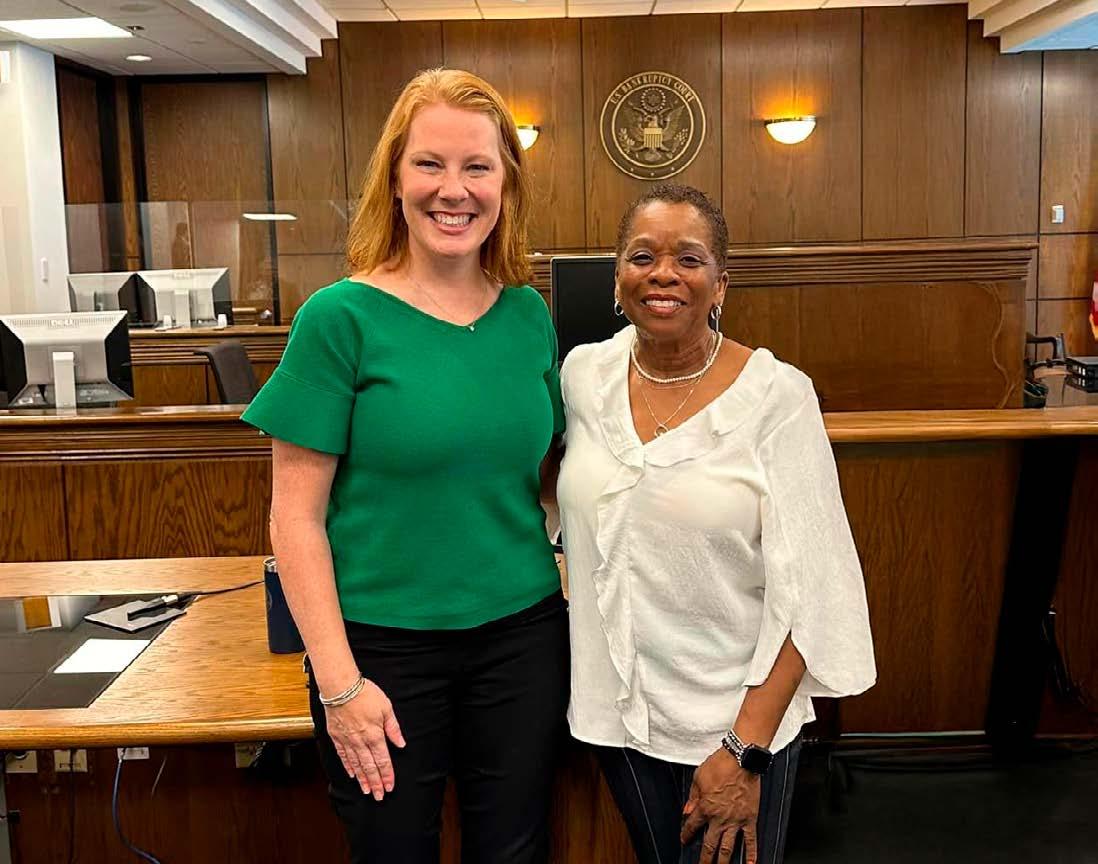

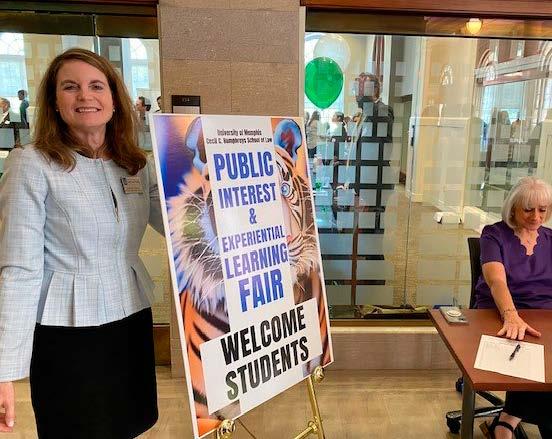
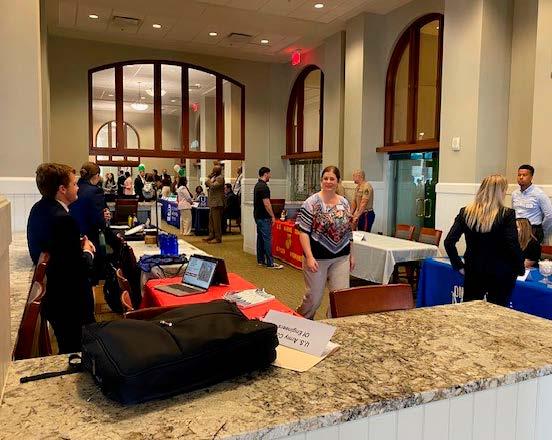
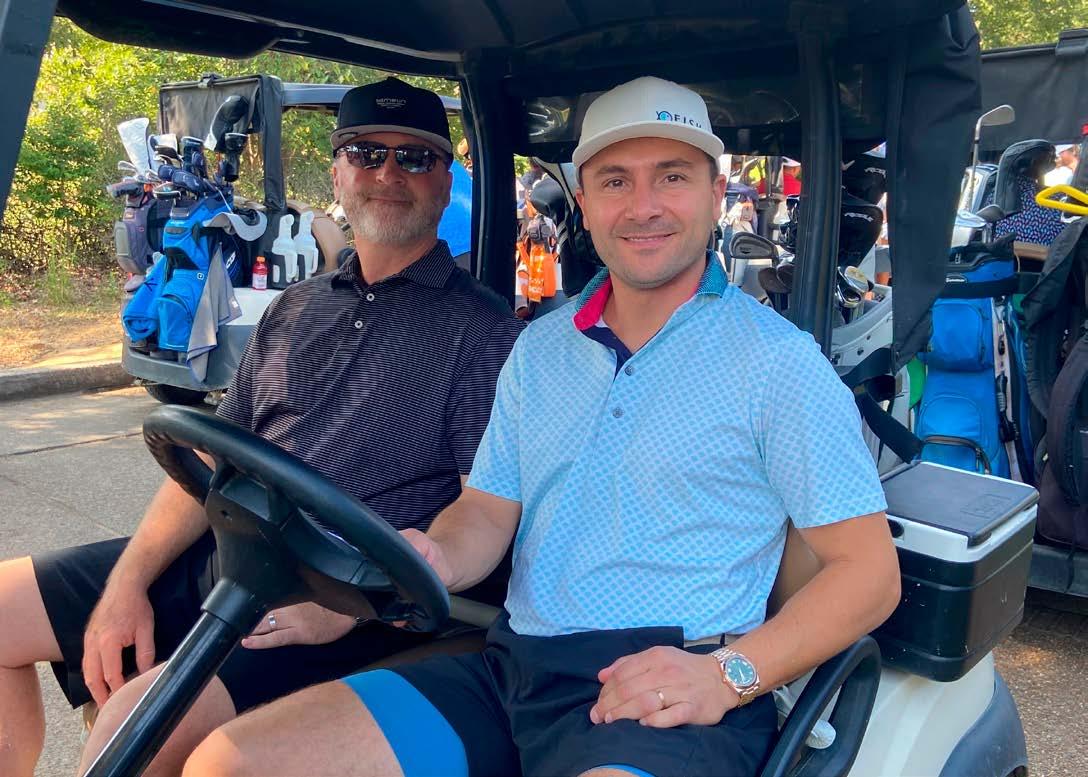



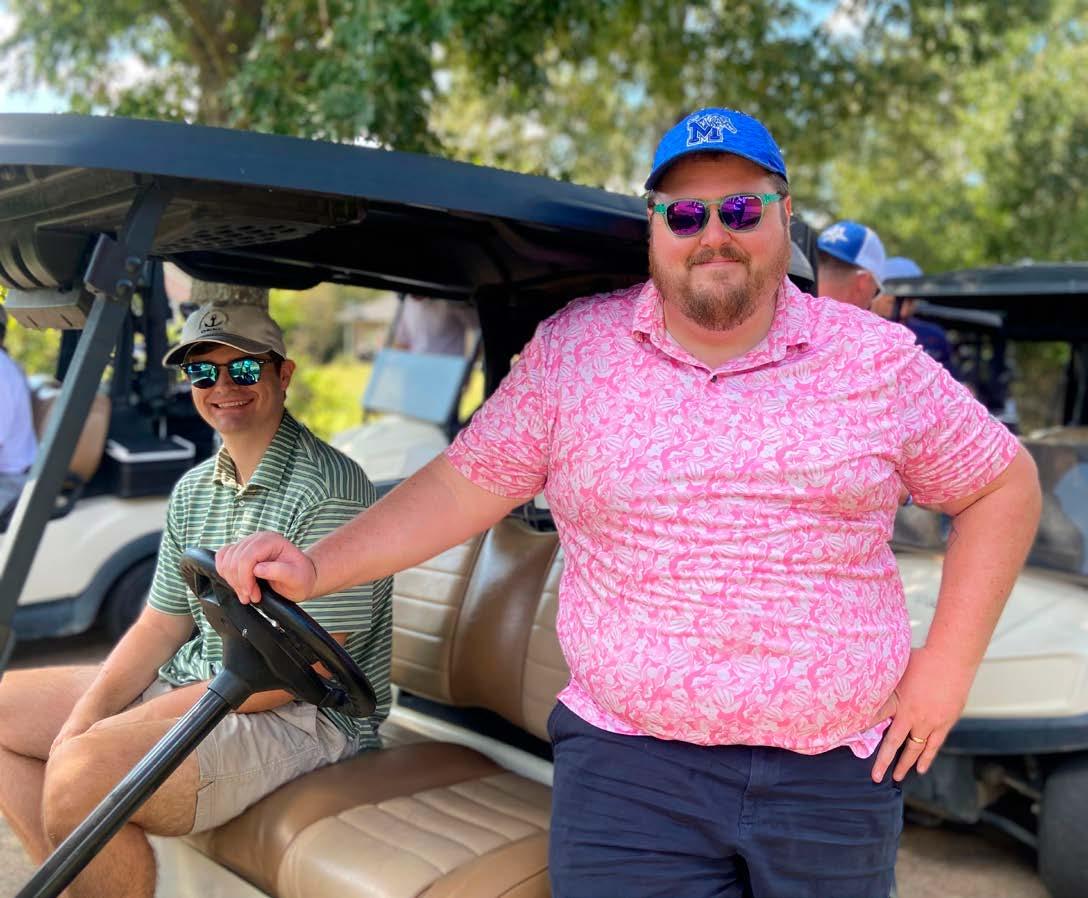










Juvenile Court Magistrate Terre Fratesi stepped down from the bench on August 31, 2024. She said, “After 32 years with Shelby County government as a child support attorney, an assistant district attorney, and a magistrate, it is time to step down and forge a second chapter in my career. I am proud of my body of work, and it has been an honor and the privilege of a lifetime to serve our community. My colleagues and the staff at the court are exceptional human beings and I will miss them.”
Magistrate Fratesi will keep her law license active and plans to launch her Rule 31 General Civil/Family Law Mediation practice before the end of 2024.

Tennessee Supreme Court Justice Mary Wagner’s investiture ceremony took place on September 1, 2024. She received a warm welcome to the bench as family, friends, colleagues, elected officials, and members of the judiciary joined her in Germantown for a ceremonial investiture by Governor Bill Lee.








Shelby County General Sessions Judge Deborah Means Henderson was honored with the Leon Ruben Award for Excellence at the fall Tennessee General Sessions Judges Conference in late September. During the award presentation, outgoing conference president Judge James Y. Ross described Judge Means Henderson as a national and statewide leader in mediation. The Leon Ruben Award for Excellence is given annually to a judge or judges who distinguish themselves through their outstanding service to the community, the conference and the judiciary. The award is named for Judge Ruben, who served as a judge for 37 years in Nashville.

Former U.S. Attorney for the Western District of Tennessee, Kevin Ritz was confirmed to the U.S. Court of Appeals for the Sixth Circuit on September 16, 2024. He succeeds Judge Julia Smith Gibbons, who took senior status upon his confirmation.
If you are an MBA member in good standing and you’ve moved, been promoted, hired an associate, taken on a partner, or received an award, we’d like to hear from you. We will not print notices of honors determined by other publications (e.g., Super Lawyers, Best Lawyers). Notices are limited to 100 words; they are printed at no cost to members and are subject to editing. E-mail your notice and hi-resolution photo (300 dpi) to kswan@memphisbar.org.